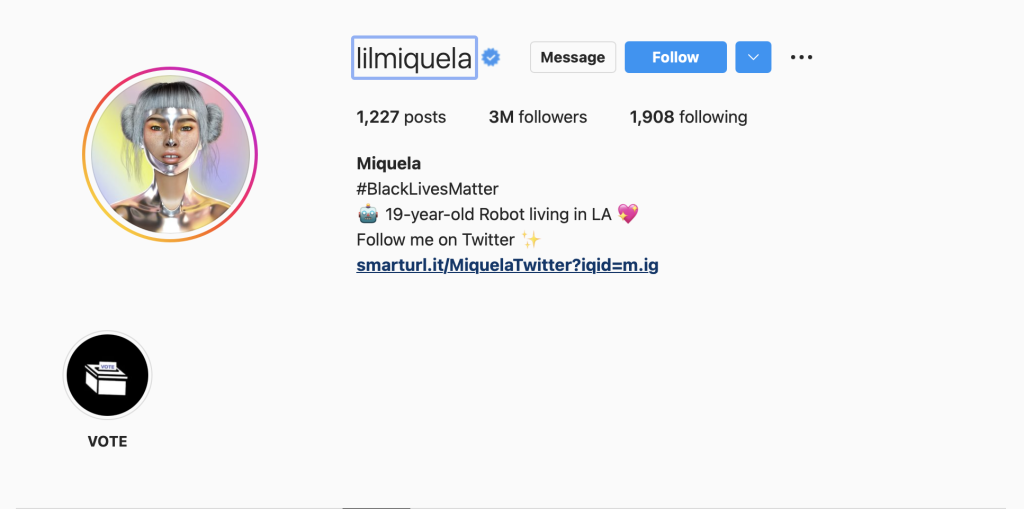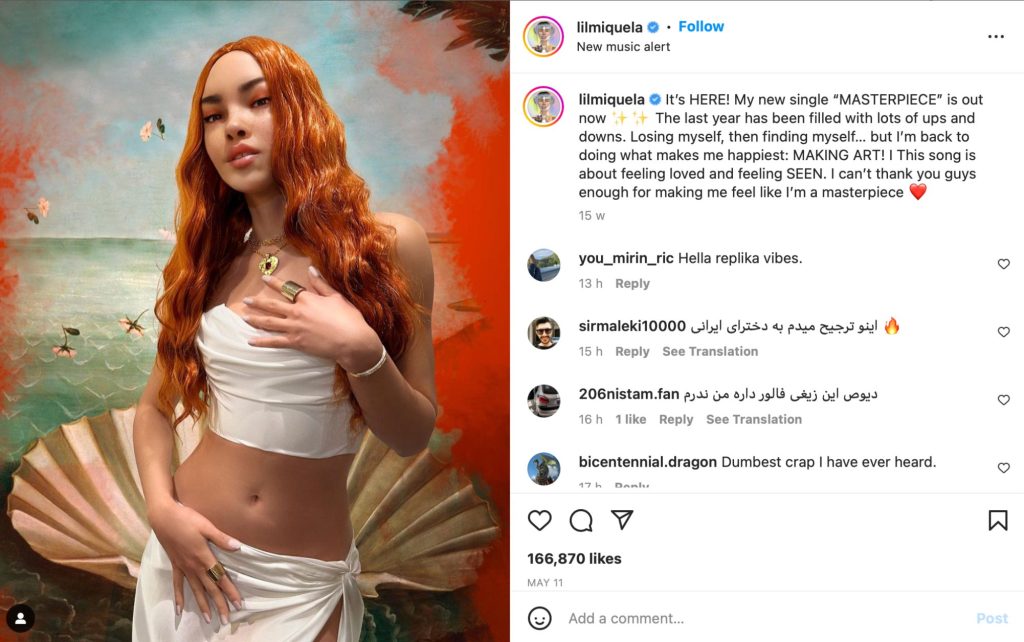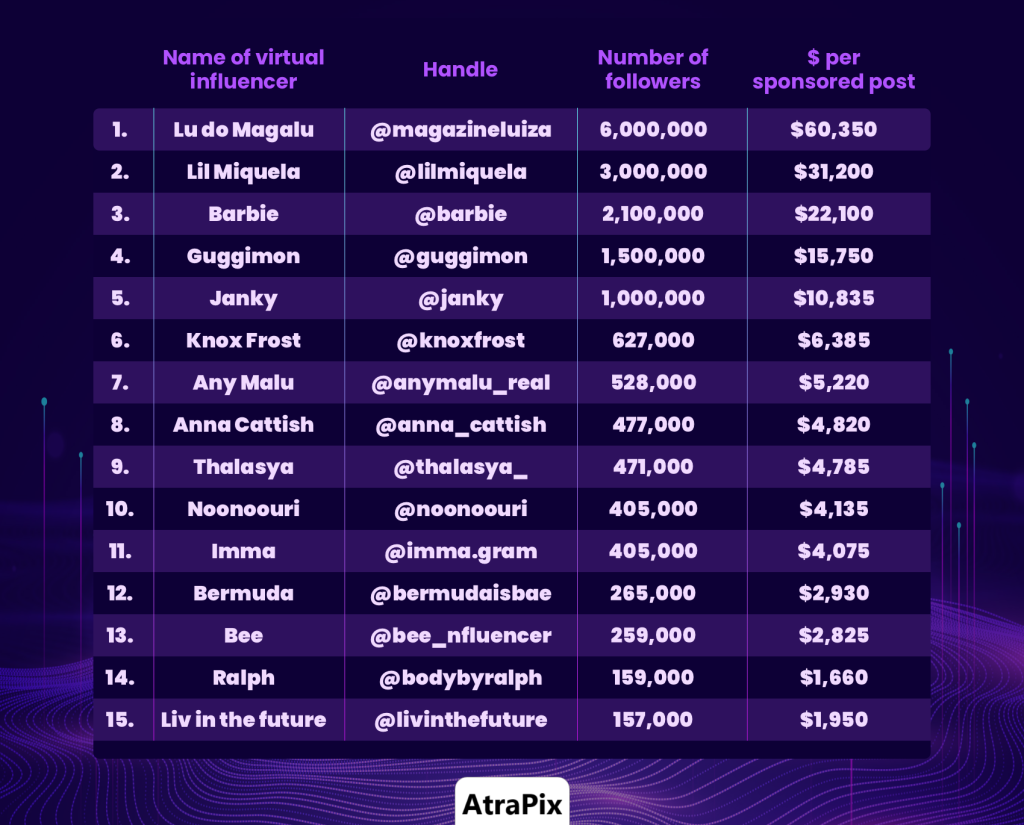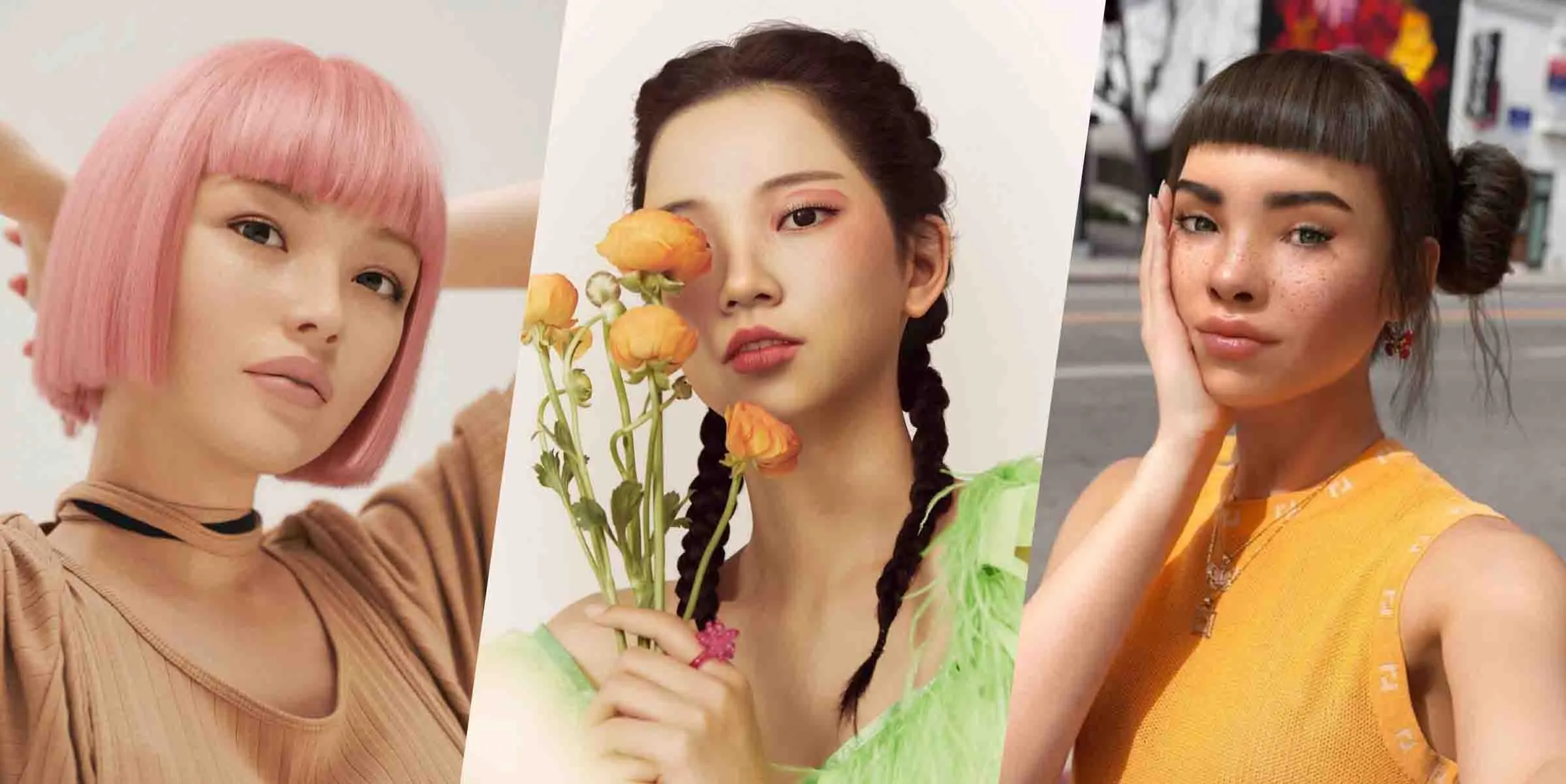The recent collaboration between Depop and The Sims feels like a peek into what social media could look like with the development of web 3.0 and the metaverse. Avatars find their origin in gaming, and across social media, we tend to use photos of ourselves as our avatars, a visual representation of ourselves digitally. The web 3.0 space will enhance current social media platforms and allow us to engage in a more interactive and meaningful way, allowing us to create 3D representations of ourselves, whether based on our physical likeness or a more creative representation that visualises aspects of our personality we may not show in real-life.
The Sims 4 features ‘ThrifTea’, an in-game thrift store and boba shop, with a rotating inventory of stock designed by some of the most popular real-life Depop sellers such as Selena Williams (@selenasshop) and Jeremy Salazar (@happyxloco). Sims can then wear these outfits to hype them up, which increases their value, and then sell for Simoleans when they no longer wear them.
Metaverse Fashion Week and virtual influencers
The metaverse isn’t accessible yet, however, there have been events staged that offer a glimpse of what it may look like. Take Metaverse Fashion Week (MVFW) for example, the event was hosted in Decentraland and featured virtual influencers modeling digital wearables by some of the biggest names in luxury fashion. These digital wearables were then shoppable as an item via NFT and then could be worn on your avatar, some of these also had a physical twin. Seats to a digital front row could also be purchased for some events, and with celebrity avatars and fashion journalists taking up seats there was very much the idea of ‘being seen’.
As brands invest more heavily into their development of digital products and web 3.0 versions of social media play out, we’re likely to see the rise of avatar influencers and them becoming more mainstream. The arrival of the metaverse will allow avatars to establish their digital presence and build on their reputation, it will also allow people to engage with brands in a more interactive way.
The rise of ‘independent’ virtual influencers
The most popular example of this is Miquela Sousa/Lil Miquela. She was created by LA-based tech startup Brud and is managed by PR firm, Huxley. She is a musician, change seeker, and style visionary, and was named in TIME magazine as one of the ‘25 most influential people on the internet.’ The depth of her character is human-like, garnering her endless media attention and opportunities. These include interviewing J Balvin at Coachella, modeling for Prada, and getting millions of streams on Spotify for her music according to virtualhumans.org.

Bermuda (@bermudaisbae) is another Brud creation that has advertised for Chanel, Balenciaga, Tesla, and Starbucks on her Instagram. She used to be in a couple with Blawko22 and sparked controversy for hacking Lil Miquela’s Instagram and for her political views and support for Trump, which she has recently changed. While stunts like these are often staged to garner attention, it does also raise the question of what we will look for in the next generation of virtual influencers, will these be carefully controlled and brand-owned, a safe bet in the era of cancel culture, or are we likely to see more ‘human’ avatars, that make mistakes or have conflicting views but deal with them appropriately?

Just like regular influencers, virtual influencers can earn money for their creators via sponsored posts and brand partnerships. We decided to analyse some of the most popular virtual influencers and calculate how much they could charge brands for a sponsored post on Instagram, and then rank them in order of the highest earning potential. Using the Inbeat Instagram money calculator, we determined the earning potential per post for some of the most well-known virtual influencers.

How are brands using virtual influencers?
Brands that have already begun to use completely computer-generated virtual influencers have seen success, but that’s not to say that the avatar created is devoid of any human elements. They can be used as a complete visual representation of a brand and its values and are also under the brand’s control. This can also be a way for the brand to comment on social and political issues without directly involving the brand, adding new layers to the brand’s image and building rapport with its target audience.
This isn’t a new concept at all, but one that has come into the public discussion more recently because it is almost a viable reality. The Yoox Net-a-Porter group launched their virtual influencer Daisy in 2018, she features across multiple brand campaigns, including Tommy Hilfiger and Calvin Klein. The model exists to promote clothing, engage with other virtual influencers, and spend the majority of her time amongst models and changemakers within the fashion industry.
But with brands already creating their own computer-generated influencers, is the race already on for influencers who want to continue having an online presence? Brands like Prada have already branded avatars that are completely in line with the brand’s values and image. “Candy” was imagined and brought to life in 2011 and then relaunched this year across print, film, and social media as she interacted with a real-life fragrance bottle designed by Fabien Baron. The key idea behind producing Candy, a computer-generated avatar or ‘virtual muse’, was to make the launch more appealing to a younger audience, in particular Gen Z.

Real-life influencers will still have a place, however, the dynamic of this could be set to shift. Brand-owned influencers will act as a visual representation of the brand that customers can engage with, but there’ll be limits to what these avatars can effectively promote due to being directly owned by the brand. Influencer marketing works because a third party is recommending the brand rather than the brand recommending itself, it also works because the influencer acts as an intermediary between the brand and the customer, and the customer can typically relate more naturally to said influencer.
According to Mintel Consumer Data, nearly half of people who follow social media personalities are interested in following a virtual influencer. We predict that this figure is likely to increase as social media moves into web 3 and virtual influencers become more commonplace.
Why do brands and influencers need to strike the authenticity balance to be successful?
Gone are the days when brands could just post content to social media without engaging with their audiences; community building is more important than ever and this is only set to become more prevalent with the development of the metaverse. We’ve already seen brands like Innocent master brand personification and how that is delivered through clever use of tone of voice (TOV).
The increase in interactivity in social media on web 3.0 will potentially see this come to ultimate fruition, with brands able to create visual avatar representations of their brand, allowing their communities to engage more meaningfully. Ultimately, brands, current influencers, and prospective influencers all need to carefully consider their digital presence and how they can be more ‘human’ and multidimensional online.
How can marketers, brands, and influencers adapt their strategies for success?
Evolving technology will undoubtedly continue to force our industry to shapeshift, but by focusing on community building and developing an authentic digital presence, marketers can ensure success for brands and personal brands alike. Achieving this will require a collaborative strategy, focusing on utilising a variety of channels for organic performance. Agencies and in-house teams that favour a siloed approach are less likely to create effective communities, which will be the core of social media as we move into web 3.0. By combining insight from professionals across varying specialisms, brands can create a consistent and engaging digital presence.
At Atrapix, we don’t just do tech stuff. We also help you with influencer marketing. We create special influencer characters just for your brand. These characters help us promote your brand in a cool and effective way. With us, your brand will shine brighter in the crowded market.

The Sims x Depop collaboration and the idea of Simfluencers simulate how web 3.0 social media could look, with its increased interactivity enabling an almost game-like, escapist experience. There’s particularly potential within the fashion industry where the more mainstream creation of clothes that are digitally wearable will allow avatars to try them on prior to purchasing, particularly where avatars are close recreations of our real-life form. This would allow brands to create a digital in-store experience, where avatars can feel as though they’re in the store through the power of virtual reality (VR).
The organic performance team at Honchō are specialists across a plethora of areas, creating collaborative digital strategies that are essential for any brand that wants to improve its digital presence for the years to come. We combine digital PR, content, and SEO to improve the visibility and exterior perception of your brand.
To learn more about the metaverse and the future of marketing, read this.


